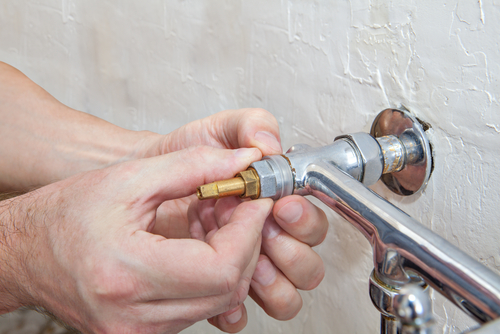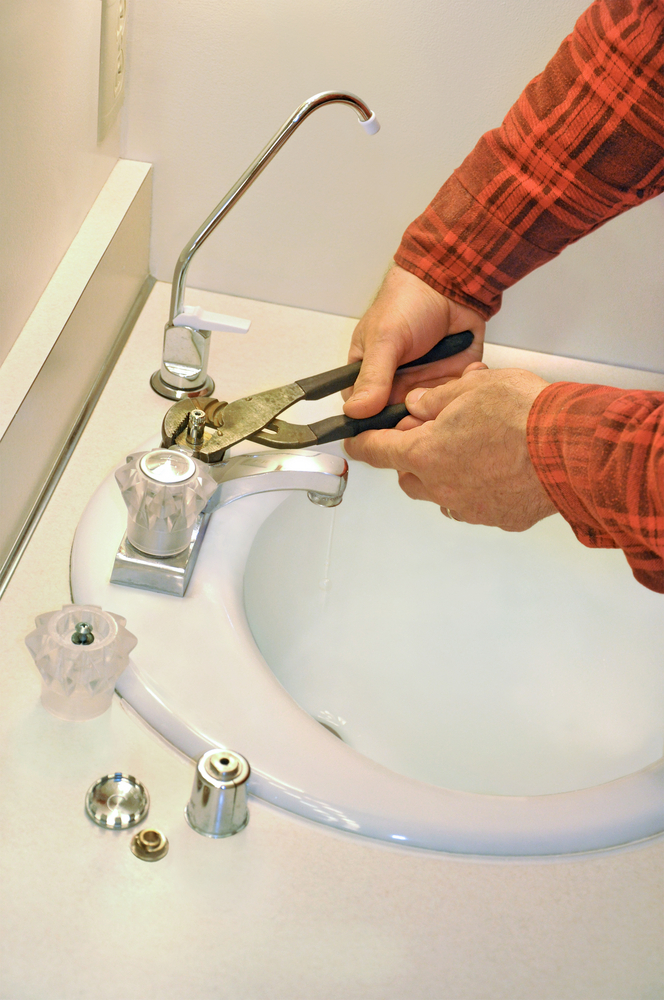Are you interested in answers on Water Dripping from Faucet: Why and How to Fix?

Dripping taps may look like a minor aggravation, however their effect goes beyond simply the inconvenience of the sound. From drainage to incurring unneeded economic expenses and health risks, ignoring a trickling tap can bring about numerous consequences. In this post, we'll look into why it's important to resolve this typical household concern promptly and effectively.
Wastage of Water
Ecological Effect
Leaking faucets add dramatically to water waste. According to the Environmental Protection Agency (EPA), a single tap leaking at one drip per secondly can throw away greater than 3,000 gallons of water each year. This not only pressures water sources but likewise affects communities and wild animals depending on them.
Step-by-Step Guide to Taking Care Of a Dripping Tap
Devices Needed
Prior to attempting to repair a dripping tap, gather the necessary devices, including an adjustable wrench, screwdrivers, replacement parts (such as washing machines or cartridges), and plumber's tape.
Typical Faucet Issues and Their Solutions
Recognize the kind of faucet and the particular concern triggering the drip. Usual troubles consist of worn-out washers, rusty valve seats, or defective O-rings. Refer to manufacturer guidelines or online tutorials for step-by-step assistance on repair services.
Financial Prices
Raised Water Bills
Past the ecological impact, dripping taps can inflate water expenses significantly. The accumulated waste with time translates right into higher energy expenditures, which could have been avoided with prompt repair work.
Possible Residential Property Damages
Moreover, prolonged dripping can result in damage to fixtures and surfaces bordering the tap. Water build-up can trigger staining, rust, and even structural concerns if left neglected, leading to extra repair work costs.
Health Worries
Mold and Mold Growth
The constant presence of moisture from a trickling faucet creates an ideal setting for mold and mold growth. These fungis not only endanger indoor air top quality but additionally position wellness risks, specifically for individuals with respiratory problems or allergic reactions.
Waterborne Illness
Stationary water in dripping taps can come to be a breeding ground for germs and various other virus, increasing the danger of waterborne conditions. Contaminants such as Legionella bacteria flourish in stagnant water, potentially resulting in significant health problems when ingested or inhaled.
DIY vs. Expert Repair work
Pros and Cons of Do It Yourself Repair
While some might attempt to take care of a leaking faucet themselves, DIY repairs include their very own collection of challenges. Without correct understanding and devices, do it yourself attempts can intensify the issue or lead to insufficient repair services, lengthening the issue.
Benefits of Hiring a Specialist Plumber
Employing a professional plumber ensures that the underlying source of the trickling tap is addressed efficiently. Plumbing technicians have the competence and equipment to diagnose and fix tap concerns successfully, conserving time and reducing the threat of additional damages.
Ecological Responsibility
Specific Contribution to Preservation
Taking duty for repairing leaking taps lines up with wider initiatives toward water conservation and ecological sustainability. Every individual's actions jointly make a considerable impact on maintaining valuable resources.
Lasting Living Practices
By prioritizing punctual repair work and taking on water-saving practices, people contribute to lasting living practices that profit both existing and future generations.
Preventive Measures
Routine Upkeep Tips
To avoid trickling faucets, carry out routine maintenance such as cleaning up aerators, evaluating for leakages, and replacing worn-out parts immediately. In addition, take into consideration mounting water-saving tools or upgrading to more reliable components.
Importance of Prompt Repairs
Addressing leaking faucets as quickly as they're seen prevents additional water waste and possible damages, inevitably conserving both water and money in the future.
Influence On Residential Or Commercial Property Worth
Understanding of Well-Maintained Residential Or Commercial Property
Keeping a building in good condition, including addressing maintenance concerns like dripping faucets, boosts its perceived worth and desirability among prospective customers or tenants.
Influence on Resale Worth
Properties with well-kept plumbing components, consisting of faucets, command higher resale values in the real estate market. Addressing dripping faucets can contribute to a positive impression during residential or commercial property evaluations and settlements.
Conclusion
Addressing a dripping tap exceeds mere convenience; it's an essential action towards saving water, reducing monetary prices, and guarding health and home. Whether through do it yourself repairs or expert assistance, doing something about it to deal with trickling faucets is a little yet impactful way to advertise responsible stewardship of sources and contribute to a much healthier, extra lasting future.
How to Fix a Leaky Faucet: Step-by-Step Repair Guide
A leaky faucet may seem like a simple annoyance, but if it's not fixed promptly, that leak could cost hundreds to potentially thousands. From water damage to mold, mildew, and high water bills, even a tiny leak can be catastrophic if left unattended. Damage like this can even affect the overall value of your home, so it's important to take the right approach for leaky faucet repair. You may need the help of a plumber in some cases, but we've got a few tips you can try on how to fix a leaky faucet before calling the pros.
Four Faucet Types
When you're learning how to fix a leaky faucet, the first step is knowing what kind of faucet you're working with! There are four common types.
Cartridge Faucets
Cartridge faucets come in one- or two-handled varieties. In one-handled cartridge faucets, hot and cold water combines in a single cartridge. In the two-handled versions, hot and cold water are controlled separately and mixed in the faucet.
Ball Faucets
Ball faucets have a single lever you push up and down to adjust the pressure and rotate to change the temperature. A slotted metal ball controls the amount of water allowed into the spout.
Compression Washer Faucets
They're the oldest type of faucet, but they're still used in many homes — especially older ones. Compression faucets have two separate handles that, when turned, raise or lower the washer that seals a water valve. This valve stops water from flowing through the faucet when it is turned off.
Disc Faucets
Disc faucets rarely need to be repaired due to their maintenance-free design. The water flow is controlled by two discs — the upper one raises and lowers against a fixed lower disc, creating a watertight seal. If your disc faucet starts leaking, you may need to replace the seals or clean residue buildup from the inlets.
Fixing a Leaky Faucet
Step 1: Turn Off the Water
Whether you're learning how to fix a leaky bathtub faucet or how to fix a leaky kitchen faucet, always turn off the water supply to your working area when you're fixing a leak. The last thing you want is a flood added to your list of things to fix.
Look for the shutoff valves below your sink or around the tub and turn them clockwise to stop the water flow. If your faucet doesn't have shutoff valves, you may need to turn off the water for the whole house. Check to make sure it's off by turning the faucet on. If nothing comes out, you're ready to start the repair.
Step 2: Take Apart the Faucet
How you disassemble your faucet depends on the type of fixture you have. You can use a flathead screwdriver to remove the caps on top of the handle or handles for cartridge and compression faucets. Inside, you should see handle screws. Unscrew these with a screwdriver to remove the handle.
Disc- and ball-style faucets will typically have an inlet screw near the handle, and removing that will reveal the interior of the faucet.
Detach the Valve Stem
For cartridge- and compression-style faucets, you'll see the inner valve stem or cartridge once you remove the faucet handles. If you have a compression faucet, unscrew the brass valve stem. If you have a cartridge faucet, pull out the cartridge. If your cartridge has been in place for a while, it may require some tools or extra force to remove it due to mineral deposits.
Examine and Replace Parts
Once you've removed the parts, check them out to confirm what needs to be replaced. You may see corroded rubber washers, O-rings, stems, or cartridges. On a ball-style faucet, check the seats and springs for damage.
If you need to repair a leaky disc faucet, check the inlet and seals on the lower disc.
Once you determine what parts must be replaced, visit your local hardware store. Bring the damaged parts with you to ensure you can purchase the correct components to replace them.
Clean Valves and Faucet Cavity
If you've removed a stem or cartridge, you may notice mineral buildup in the faucet's threads. Use white vinegar to clean the valve seat by soaking it for a few minutes, then scrub it away with a soft toothbrush and rinse with warm water. You can also clean the interior of the faucet in the same way.
Reassemble the Faucet
Once your faucet is cleaned and the required parts have been replaced, it's time to reassemble it. Put the pieces back together and slowly turn the water supply back on. Doing this slowly is crucial because too much initial water pressure can damage the new hardware you've just installed.
https://homewarranty.firstam.com/blog/how-to-fix-leaky-faucet

As a fervent reader on How to Fix a Dripping or Leaky Faucet , I thought sharing that excerpt was really helpful. Be sure to pause to share this blog post if you enjoyed reading it. Thanks so much for your time invested reading it.